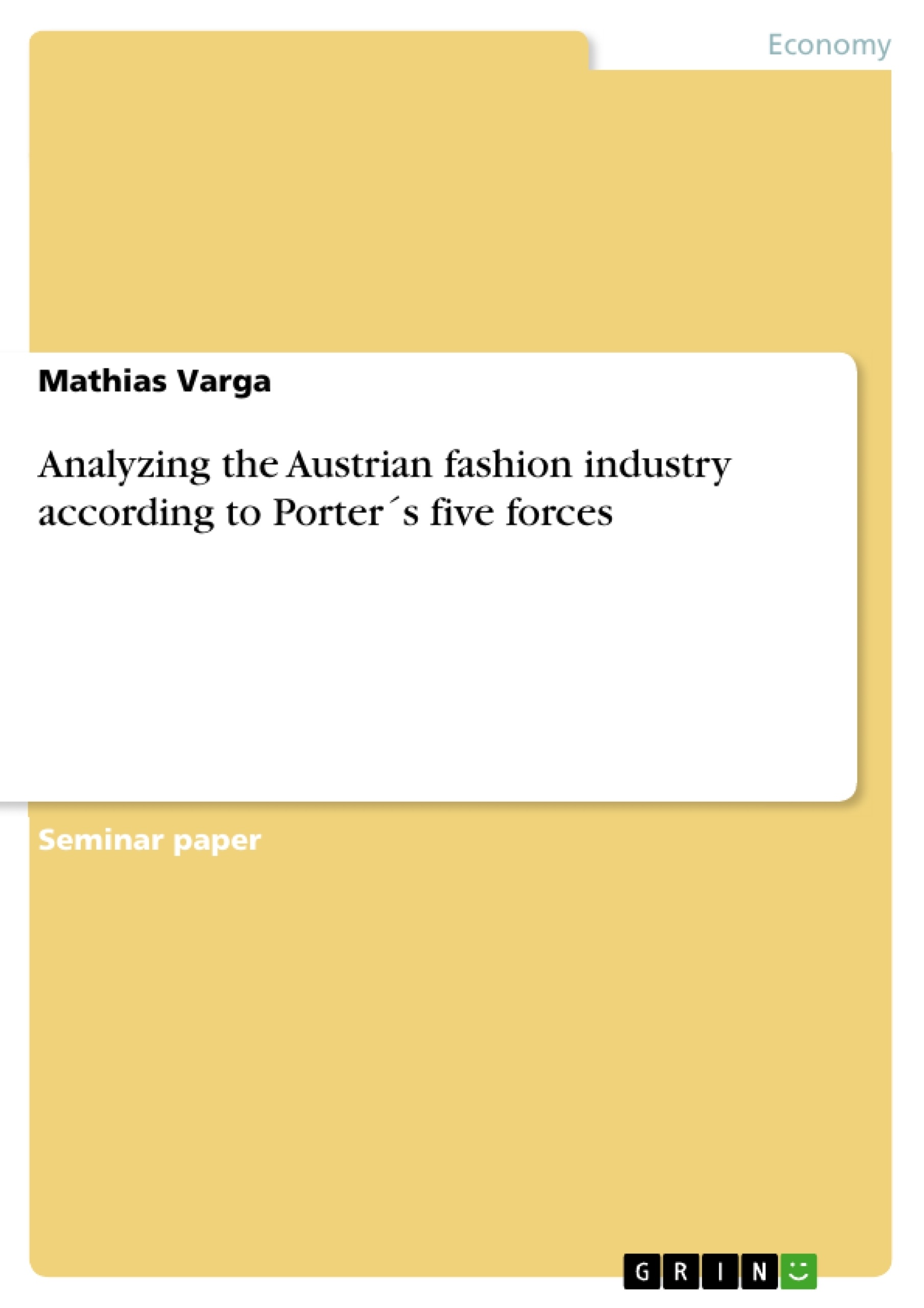In this paper, Austria’s jeans and lifestyle branch will be analyzed with particular reference to Porter’s competitive strategies. The first part of this paper takes a look at Porter’s five competitive strategies and their context. The second part deals with the jeans and lifestyle branch in Austria and the influence of the five competitive strategies on this industry.
Competitive strategy provides a comprehensive framework for understanding the forces at the basis of the competition in the industry – summarized by the five competitive forces. This framework illuminates the important branch-specific differences, shows the development of industries and helps companies in finding a unique competitive position.
Industries change with increasing pressure and thus industry structures as well as borders between industries are reconfigured. While companies of the nineties are substantially different than in the seventies or eighties, high profitability is still based on cost advantages and differentiation. One might believe that faster development cycles or total quality management are the key to the competition, but the crucial point to determine to what extent these methods influence the competition and the relative cost position of a company as well as its ability to differentiate and to enforce surcharges.
Inhaltsverzeichnis (Table of Contents)
- 1. Introduction
- 2. Industry Structure and Trade Competitions
- 3. Five Competitive Forces
- 4. Critical Résumé
- 5. Porter's Approaches to Competition
- 6. The Jeans and Lifestyle Industry in Austria
- 7. Strategic Groups on the example Jeans and Lifestyle Industry
- 8. Five Competitive Forces in the Jeans and Lifestyle Industry
- 8.1 Bargaining Power of Buyers
- 8.2 Bargaining Power of Suppliers
- 8.3 The Threat of New Entrants
- 8.4 The Threat of Substitute Products
- 8.5 Rivalry in the Industry
- 9. Conclusion
Zielsetzung und Themenschwerpunkte (Objectives and Key Themes)
This paper analyzes the Austrian jeans and lifestyle industry through the lens of Porter's five competitive forces. It explores the application of these forces to the industry, highlighting the influence of customer and supplier power, potential market entrants, substitute products, and rivalry among competitors.
- Porter's Five Forces Framework
- Competitive Advantages and Industry Profitability
- Strategic Groups and Market Segmentation
- The Influence of Competitive Forces on the Jeans and Lifestyle Industry
- Competitive Strategies for Success in the Austrian Jeans and Lifestyle Market
Zusammenfassung der Kapitel (Chapter Summaries)
- Chapter 1: Introduction: This chapter introduces the focus of the paper, which is analyzing the Austrian jeans and lifestyle industry using Porter's five competitive forces. It highlights the importance of understanding competitive strategy in achieving long-term profitability and outlines the core components of Porter's framework.
- Chapter 2: Industry Structure and Trade Competitions: This chapter defines an industry as a group of companies offering closely substitutable products and explains how industry structure influences competition. It highlights the significance of the five competitive forces in shaping industry profitability and establishing barriers to entry.
- Chapter 3: Five Competitive Forces: This chapter provides a detailed overview of Porter's five competitive forces: bargaining power of buyers, bargaining power of suppliers, threat of new entrants, threat of substitute products, and rivalry among competitors. It emphasizes the importance of analyzing these forces in a comprehensive manner to understand the competitive landscape of an industry.
- Chapter 6: The Jeans and Lifestyle Industry in Austria: This chapter examines the Austrian jeans and lifestyle industry, highlighting its significance as a key economic sector. It explores the diverse range of players involved, including manufacturers, service providers, and customers, and emphasizes the crucial role of strategic group identification in understanding the dynamics of the industry.
- Chapter 7: Strategic Groups on the example Jeans and Lifestyle Industry: This chapter delves into the concept of strategic groups within the jeans and lifestyle industry, analyzing how companies within a specific group share similar competitive characteristics and strategies. It explores the implications of these groupings for understanding the industry's competitive dynamics and identifying potential opportunities and threats.
- Chapter 8: Five Competitive Forces in the Jeans and Lifestyle Industry: This chapter applies Porter's five competitive forces framework to the Austrian jeans and lifestyle industry. It analyzes the influence of each force on the industry's profitability, identifying key trends, challenges, and opportunities. This includes examining the bargaining power of buyers and suppliers, the threat of new entrants and substitute products, and the intensity of rivalry among existing competitors.
Schlüsselwörter (Keywords)
This paper examines the Austrian jeans and lifestyle industry, employing Porter's five forces analysis to understand the competitive landscape. Key terms and concepts include: Porter's five competitive forces, industry structure, competitive strategy, strategic groups, bargaining power, threat of entry, substitute products, rivalry, jeans and lifestyle industry, Austrian market, competitive advantage, profitability, long-term success.
- Quote paper
- Mathias Varga (Author), 2010, Analyzing the Austrian fashion industry according to Porter´s five forces, Munich, GRIN Verlag, https://www.grin.com/document/153571



